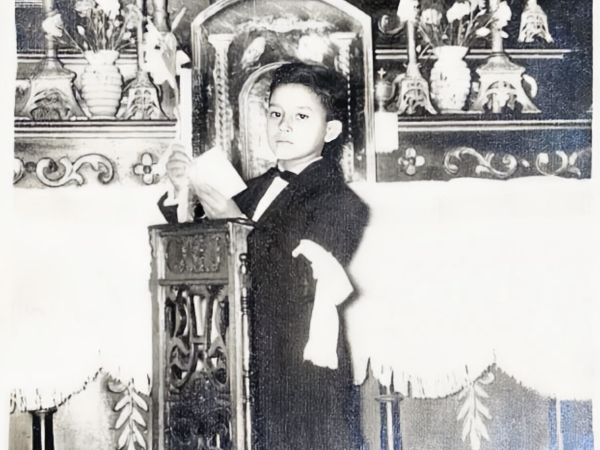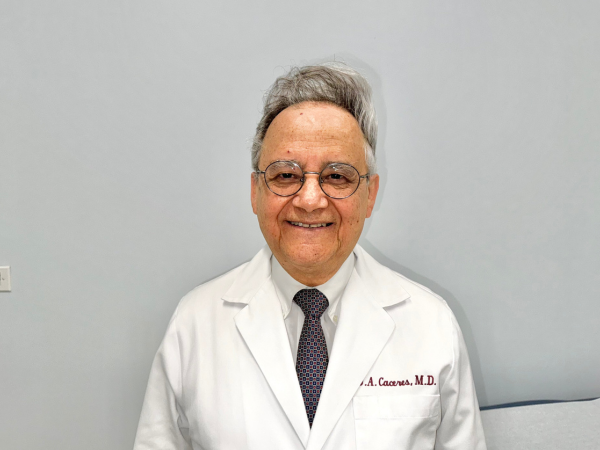I’LL BE THE FIRST to admit that the sterile and highly controlled atmosphere of a cardiac catheterization lab doesn’t inherently lend itself to reflection. Yet, in the delicate silence of this high-stakes setting—where every movement must be precise, and one small error could be tragic—I often find myself contemplating the profound mysteries of faith. It’s following these moments of intense concentration, where the line between life and death is so thin, that my thoughts naturally drift to the deeper meaning of the work I do.

DR. JOSE CACERES IS A CARDIOLOGIST PRACTICING IN BUENA PARK. PHOTO COURTESY OF DR. JOSE CACERES
As a cardiologist with over four decades of experience, I’ve come to realize that the heart is more than just a muscle; it’s a symbol of something greater. My name is Dr. Joe Caceres, and my journey has been one of bridging two worlds often seen as disparate: the realm of scientific inquiry and the domain of religious faith.
CHILDHOOD IN PERU
My Catholic roots in Peru were nurtured by a vibrant tradition, passionate devotion and a community whose connections went far beyond the usual social fabric. As a “cradle Catholic,” my earliest memories are steeped in the rhythms of parish life—the tolling of church bells, the scent of incense wafting through the
air and the reverent hush that fell over the congregation as the priest elevated the Host during consecration.
My First Holy Communion remains etched in my memory as a moment of profound wonder and joy. I still remember the weight of the occasion, even if my young mind couldn’t fully grasp the theological depth of the sacrament at the time. The solemnity, coupled with the palpable excitement of my family, impressed upon me the centrality of the Eucharist to our faith.
In the Trujillo of my youth, faith wasn’t just a Sunday obligation; it permeated every aspect of daily life. Fiestas honoring patron saints transformed our streets into vibrant expressions of devotion. Neighbors gathered to pray novenas, their voices rising in unison, a testament to the communal nature of our faith.
The Eucharist, celebrated daily in our parish church, served as the heartbeat of our spiritual life, a source of strength and unity for all who partook. My father’s role as a rector of the Cursillo de Cristiandad and co founder of an organization called Save Our Lives deeply influenced my early understanding of faith in action. Each week, our family participated in collecting donations for those in need, igniting in me a strong desire to serve others. These early experiences of faith and service would soon intertwine with a new calling, one that would shape the course of my life in ways I couldn’t have imagined.
These foundational experiences in Peru laid the groundwork for the integration of faith and science that would come to define my life’s work. They instilled in me not only a profound respect for the Eucharist, which remains at the heart of my spiritual life even decades later, but also the belief that the mysteries of faith and the discoveries of science are two sides of the same coin. As I moved forward, this deep-seated faith guided me toward a vocation that, though different from the priesthood, allowed me to serve God by exploring the intricate design of His creation—finding in the heart of medicine the same divine truth that I found in the heart of the Eucharist.
This is the first installment in a series of articles by Dr. Caceres. In the next article, he will explore how his journey led him from considering the priesthood to pursuing a career in medicine, and how this decision deepened his understanding of both faith and science.


